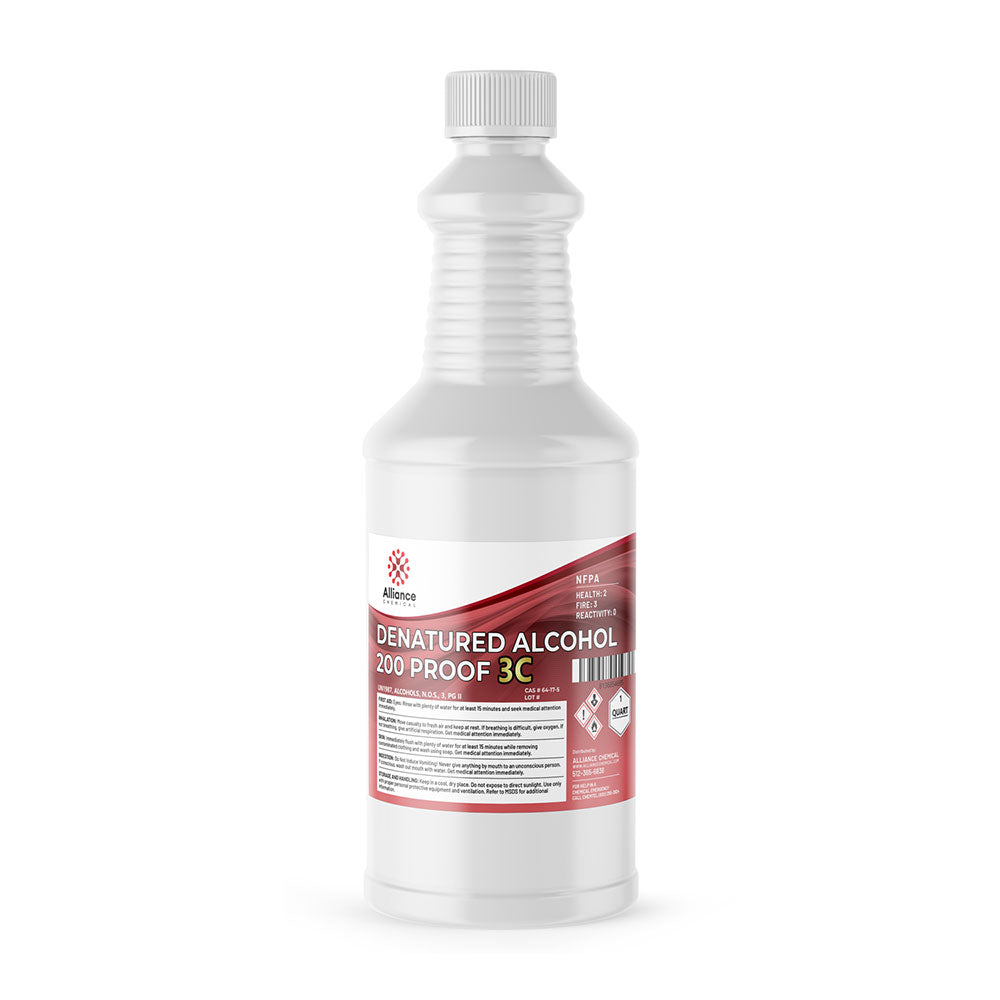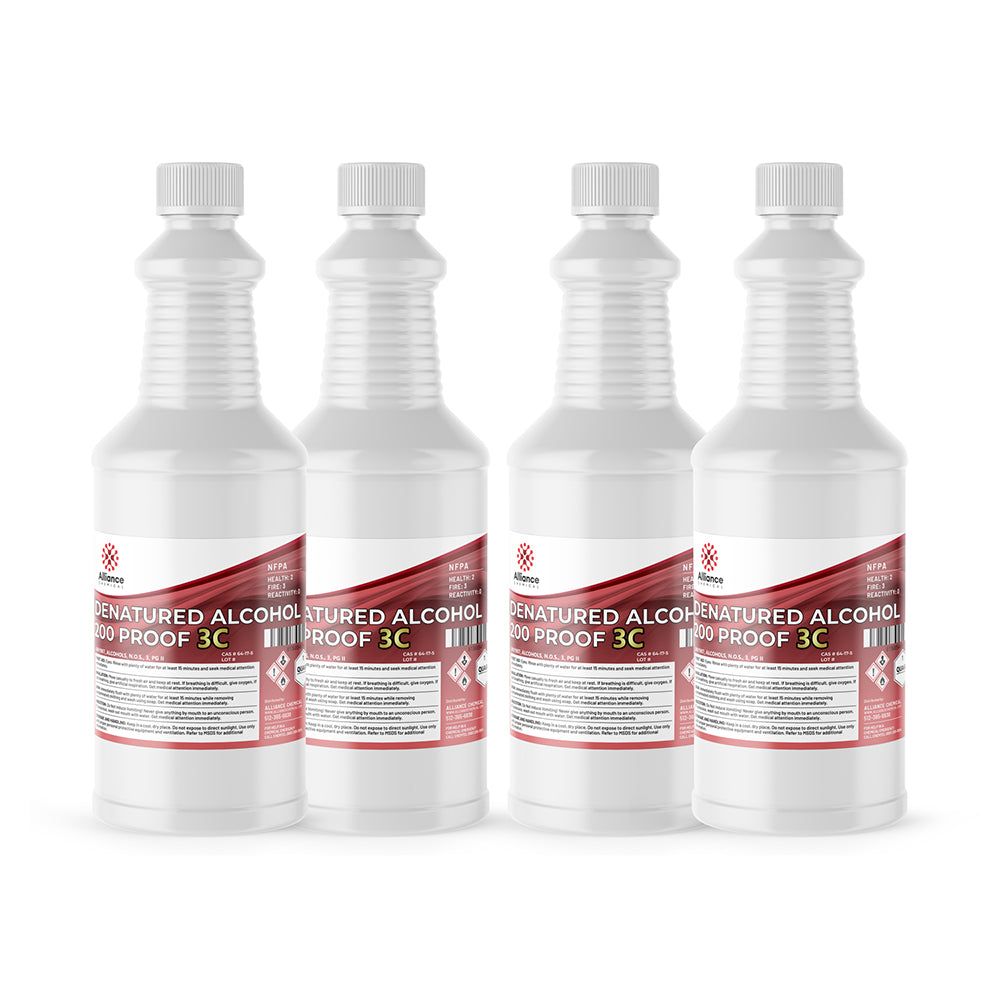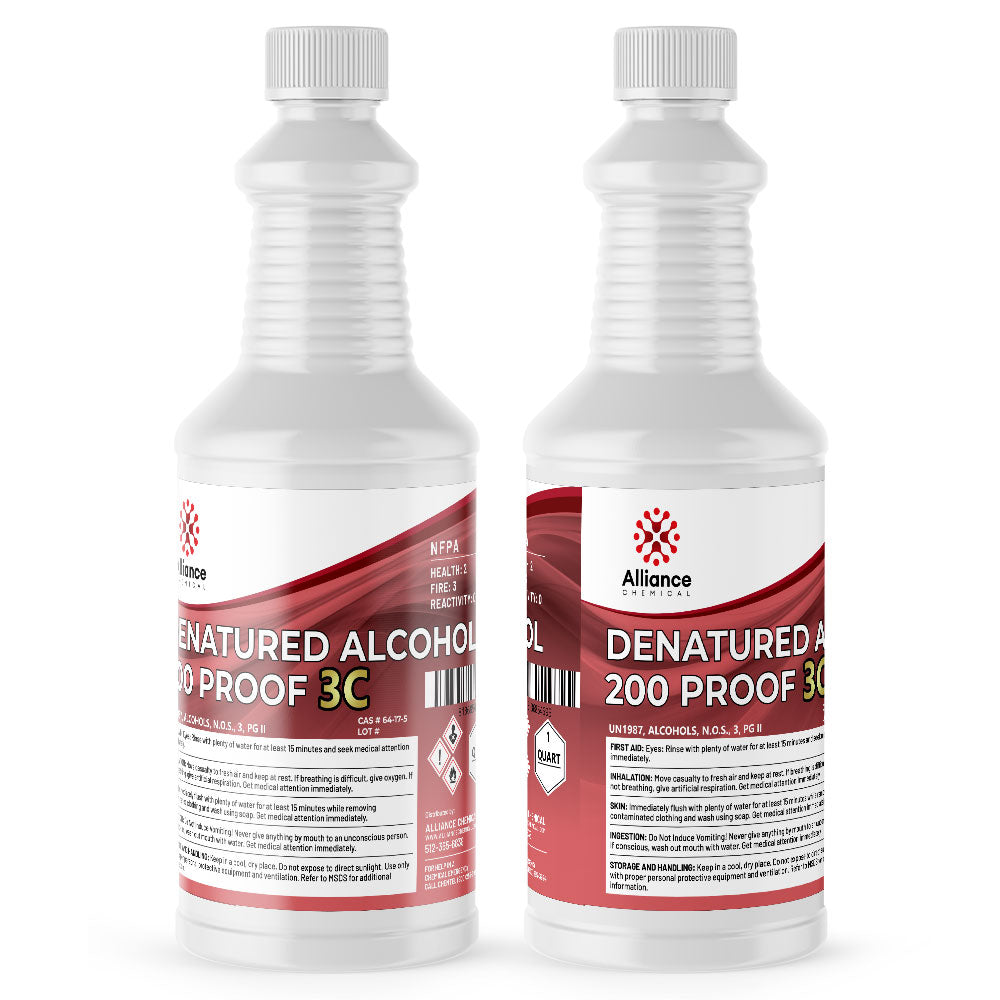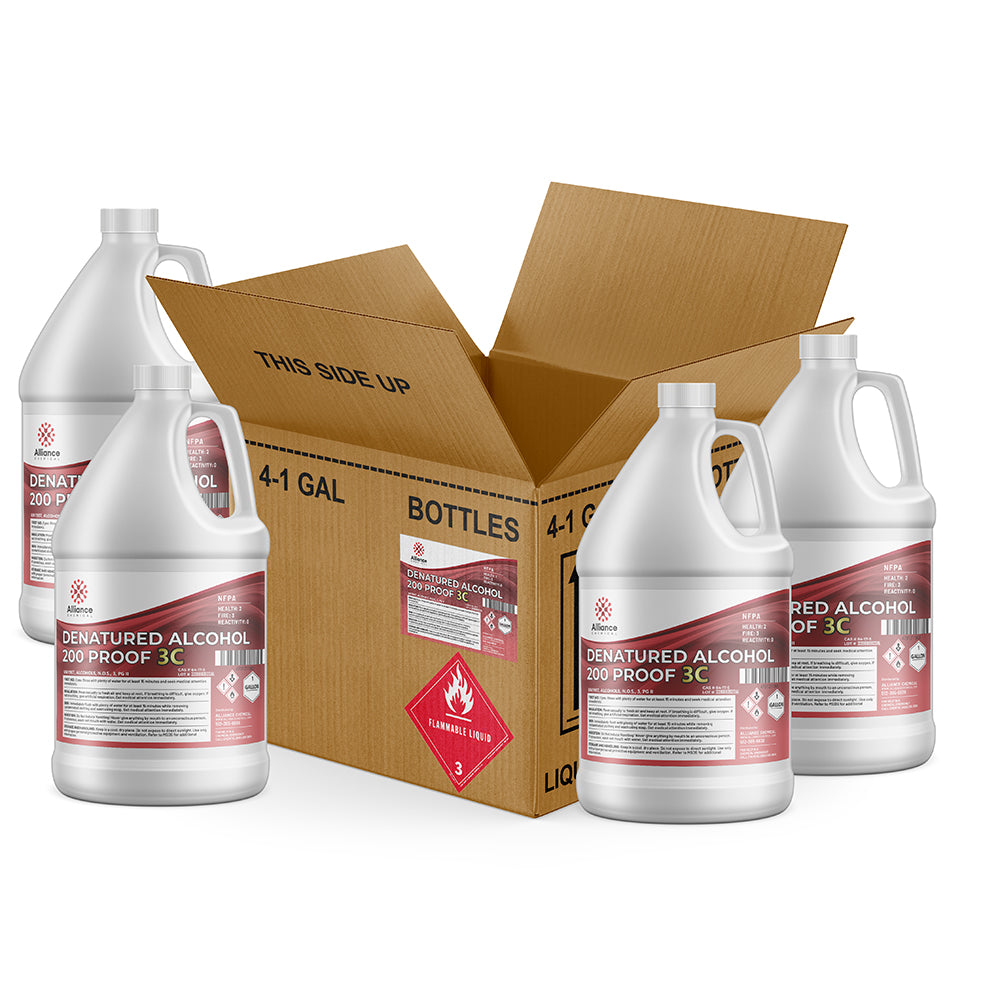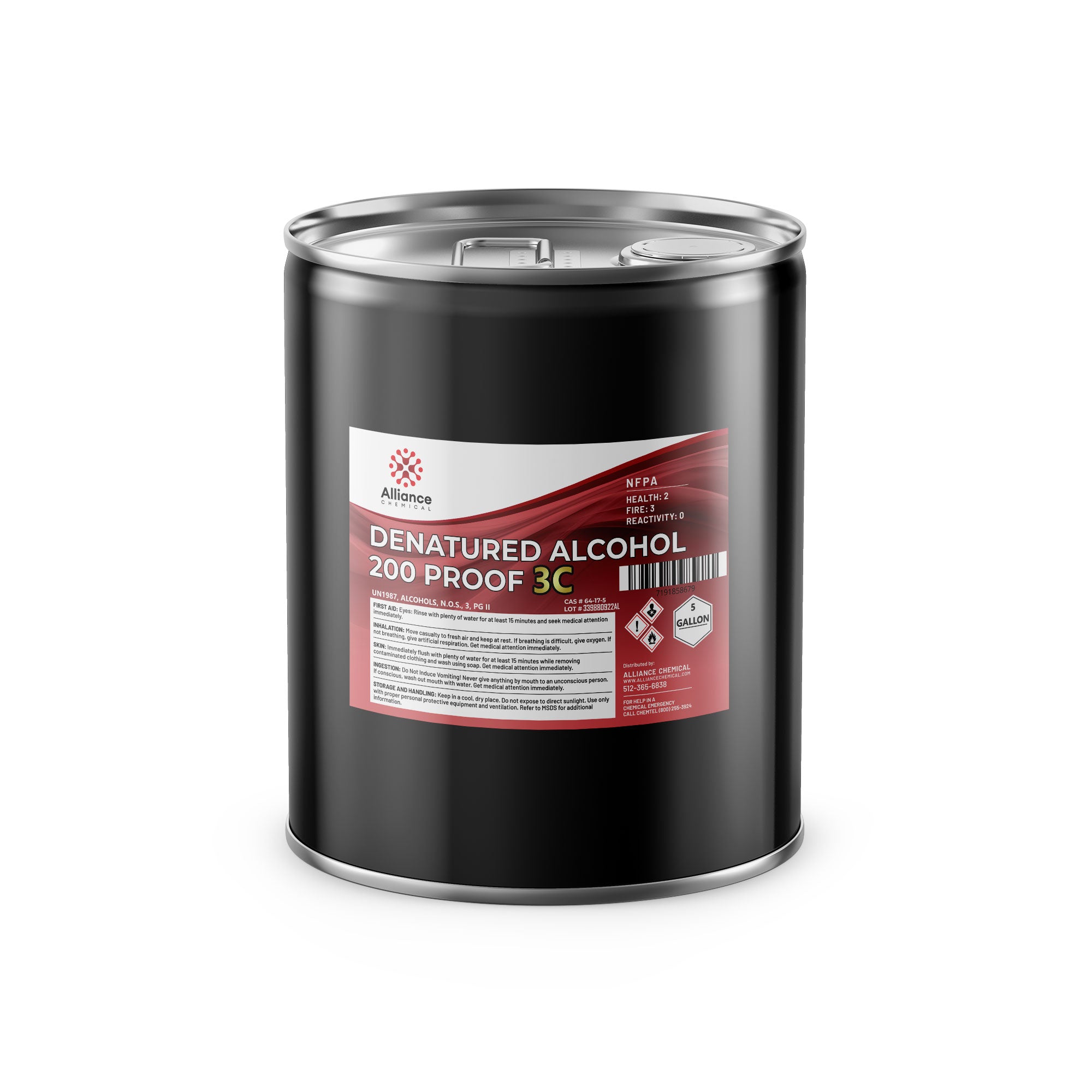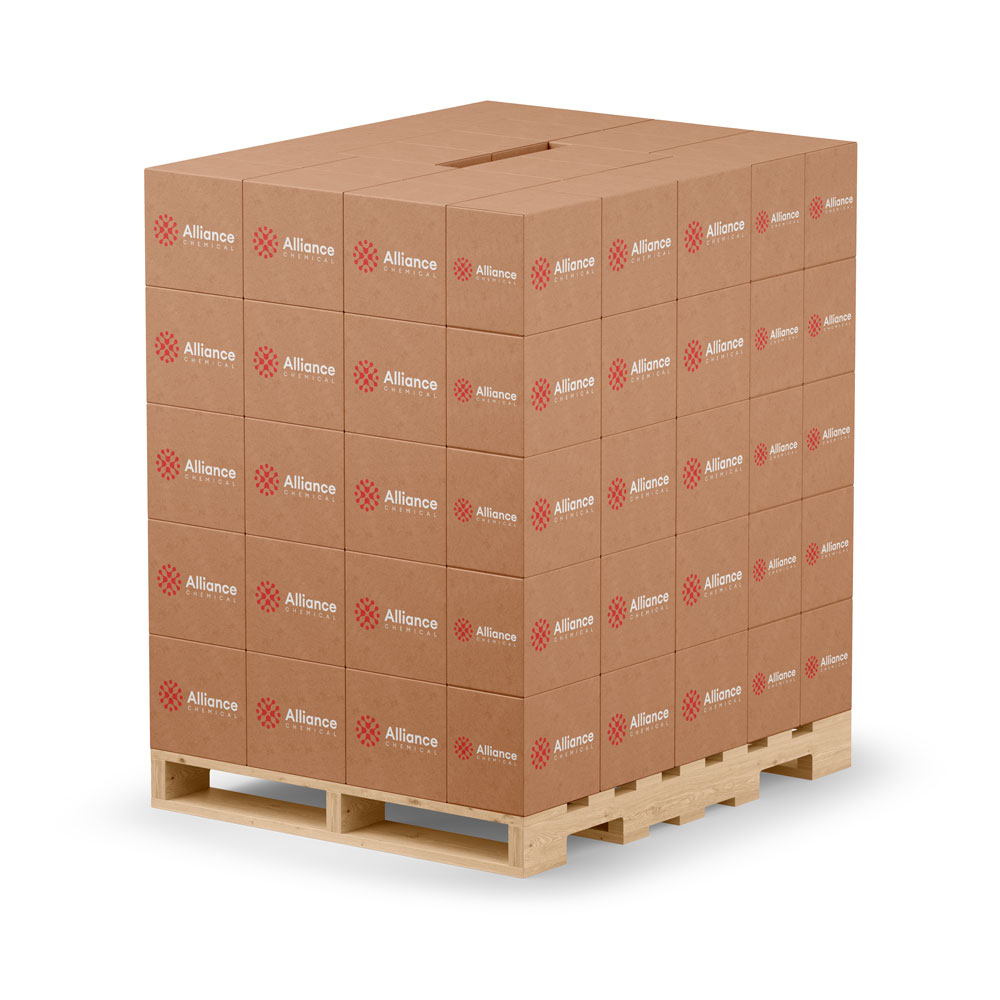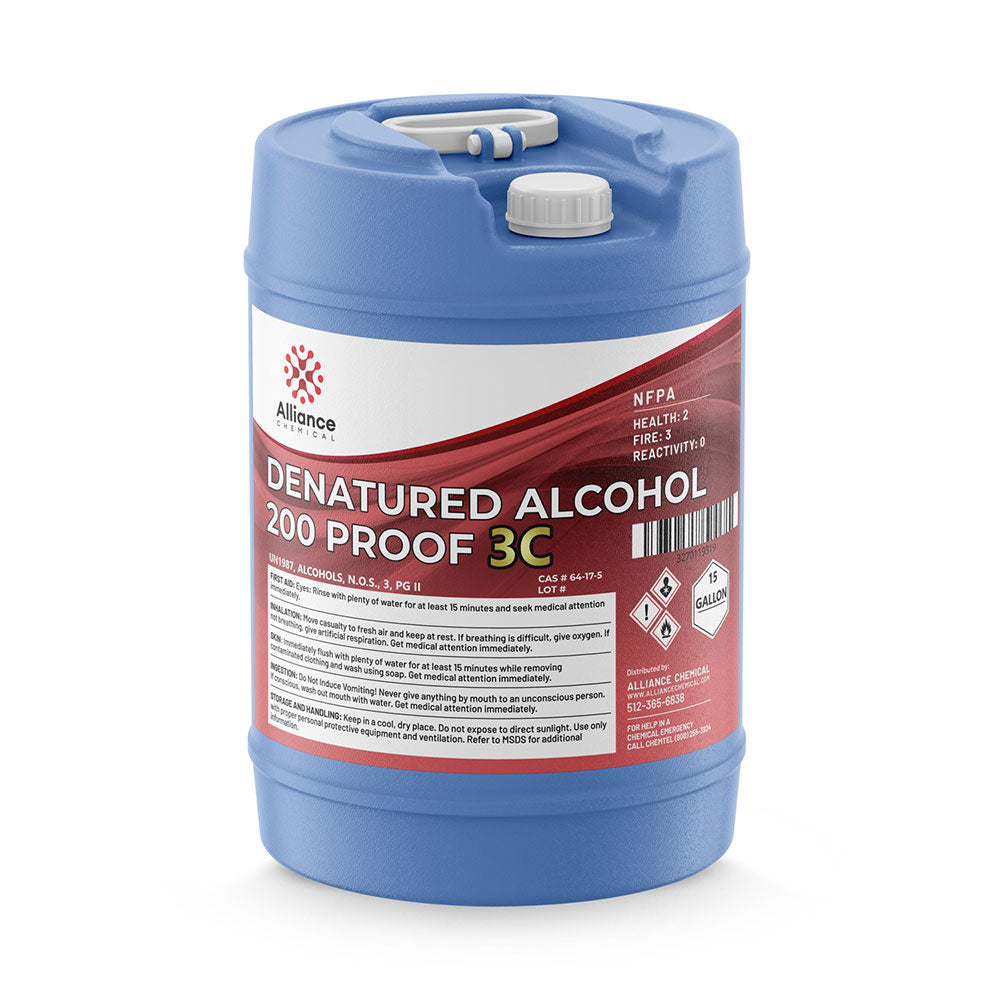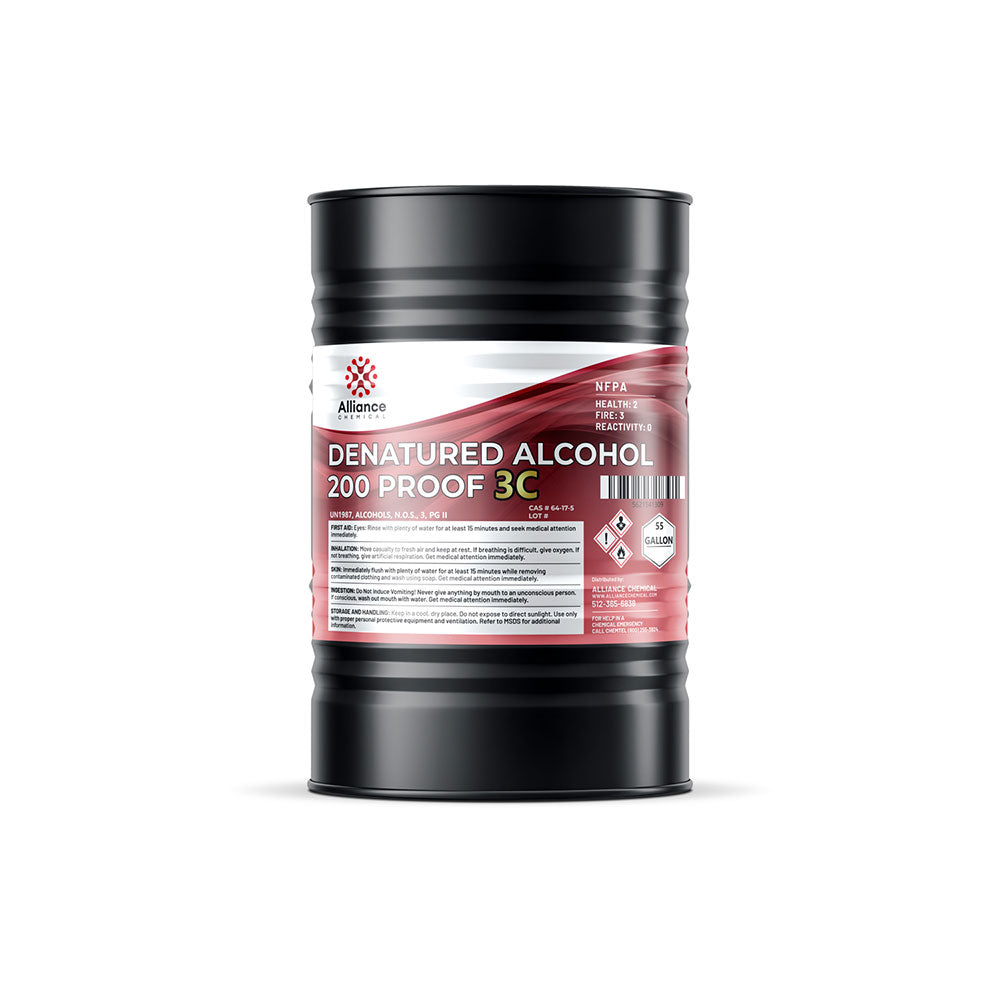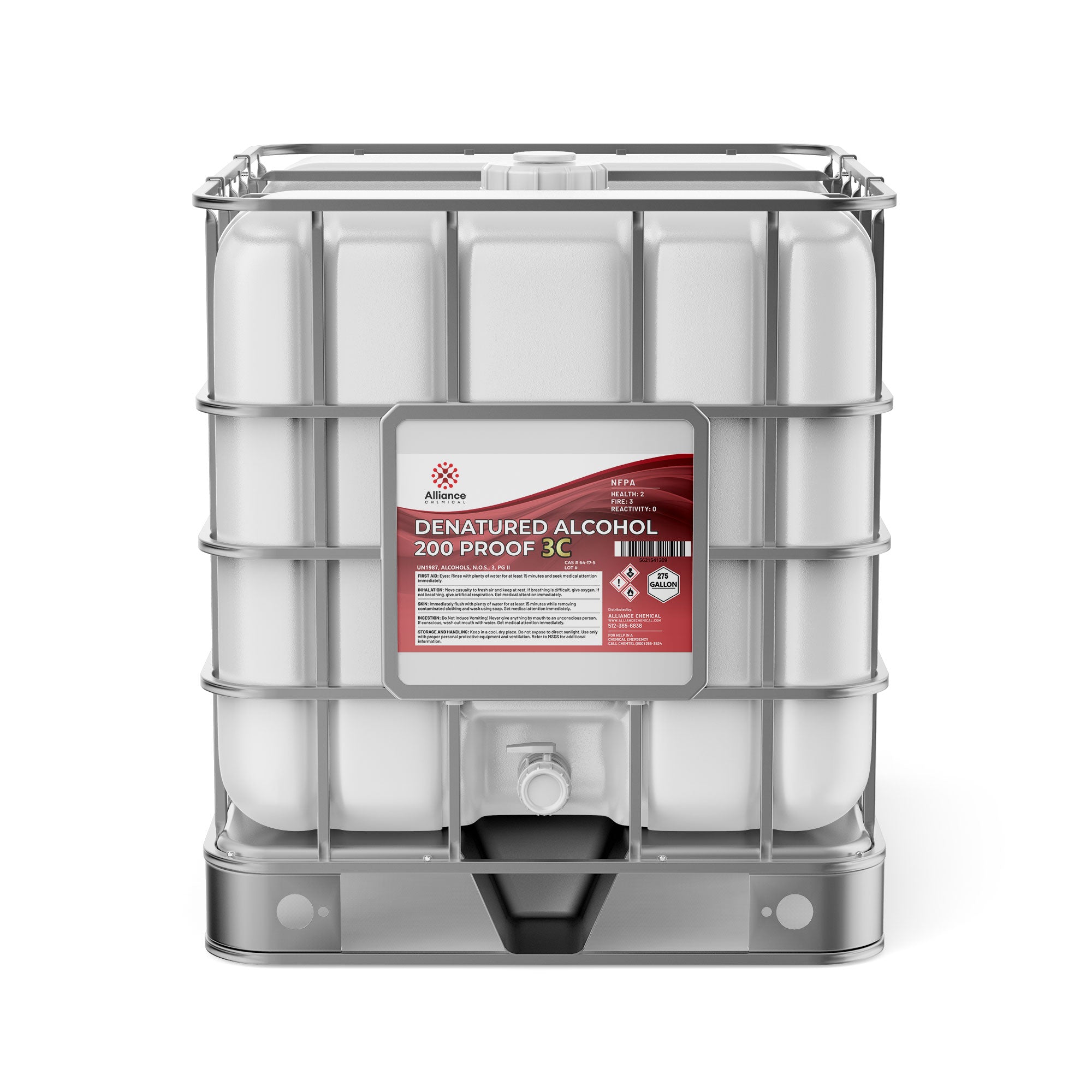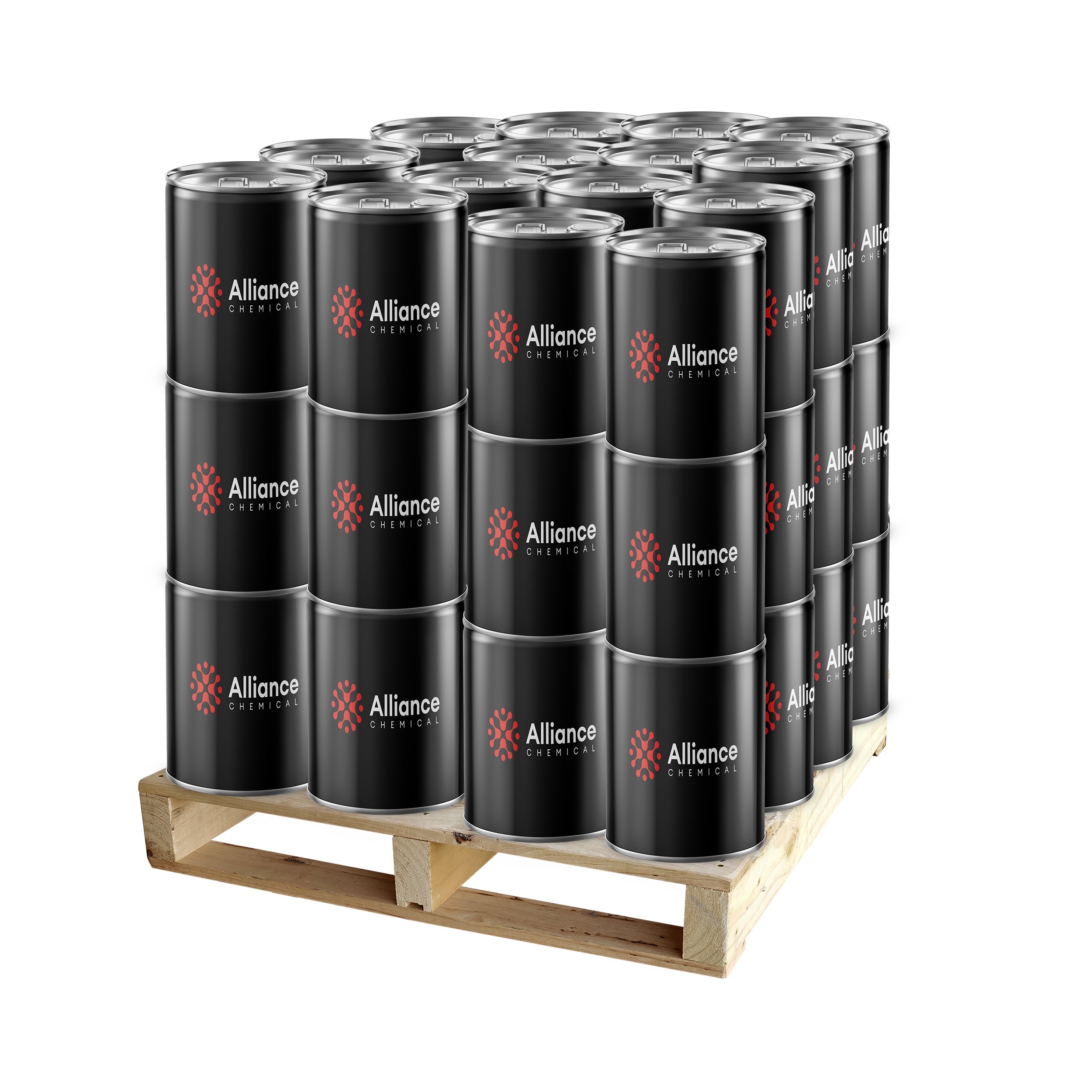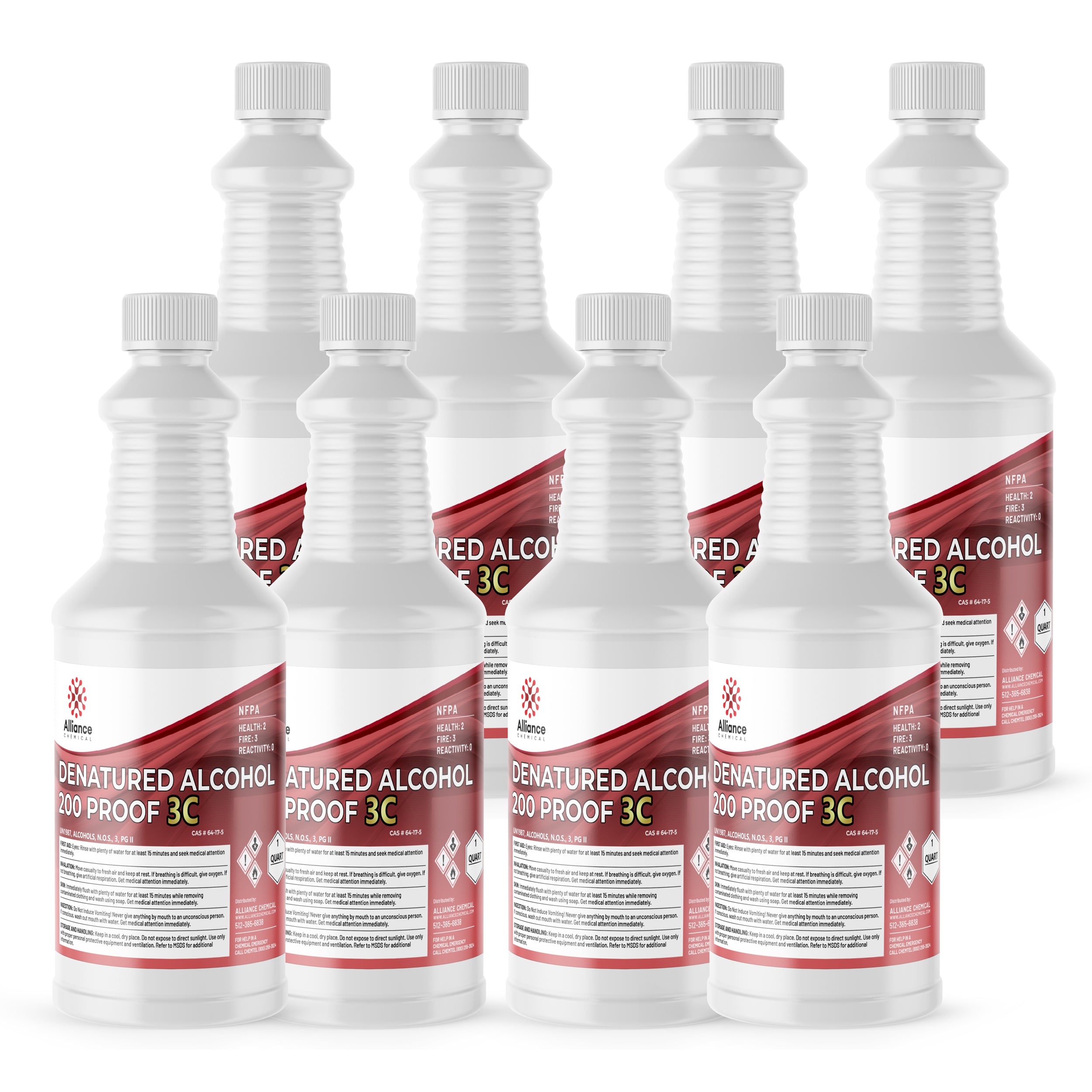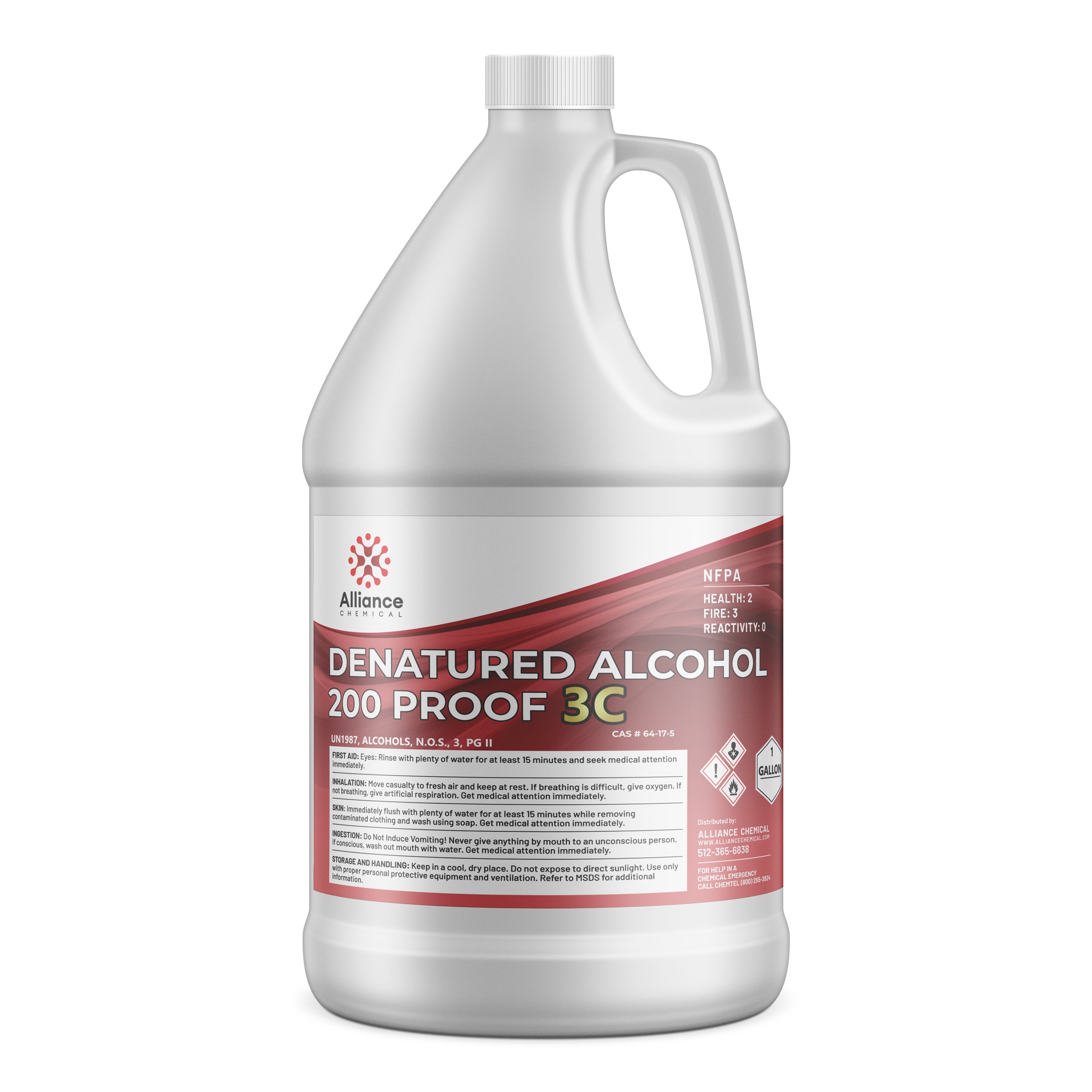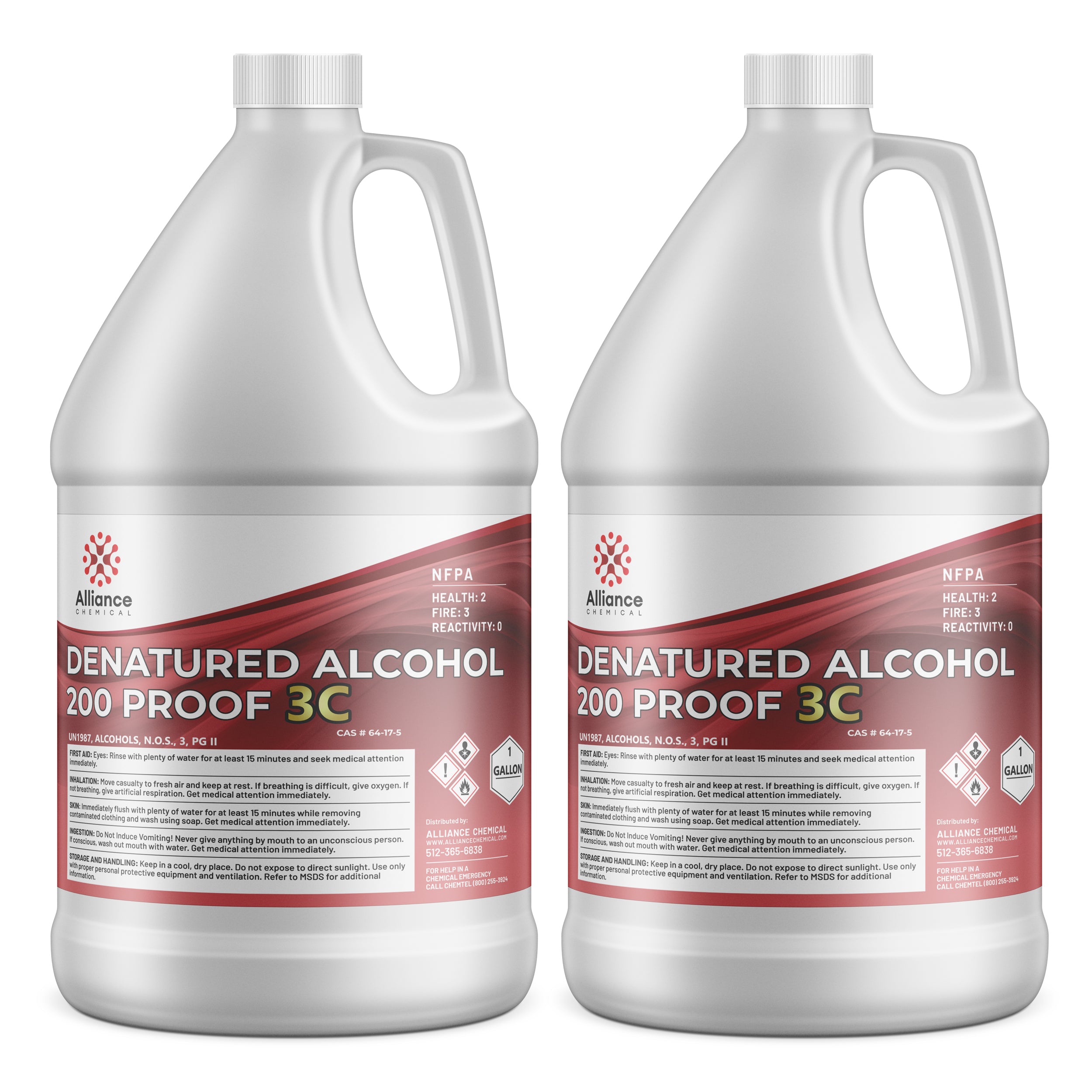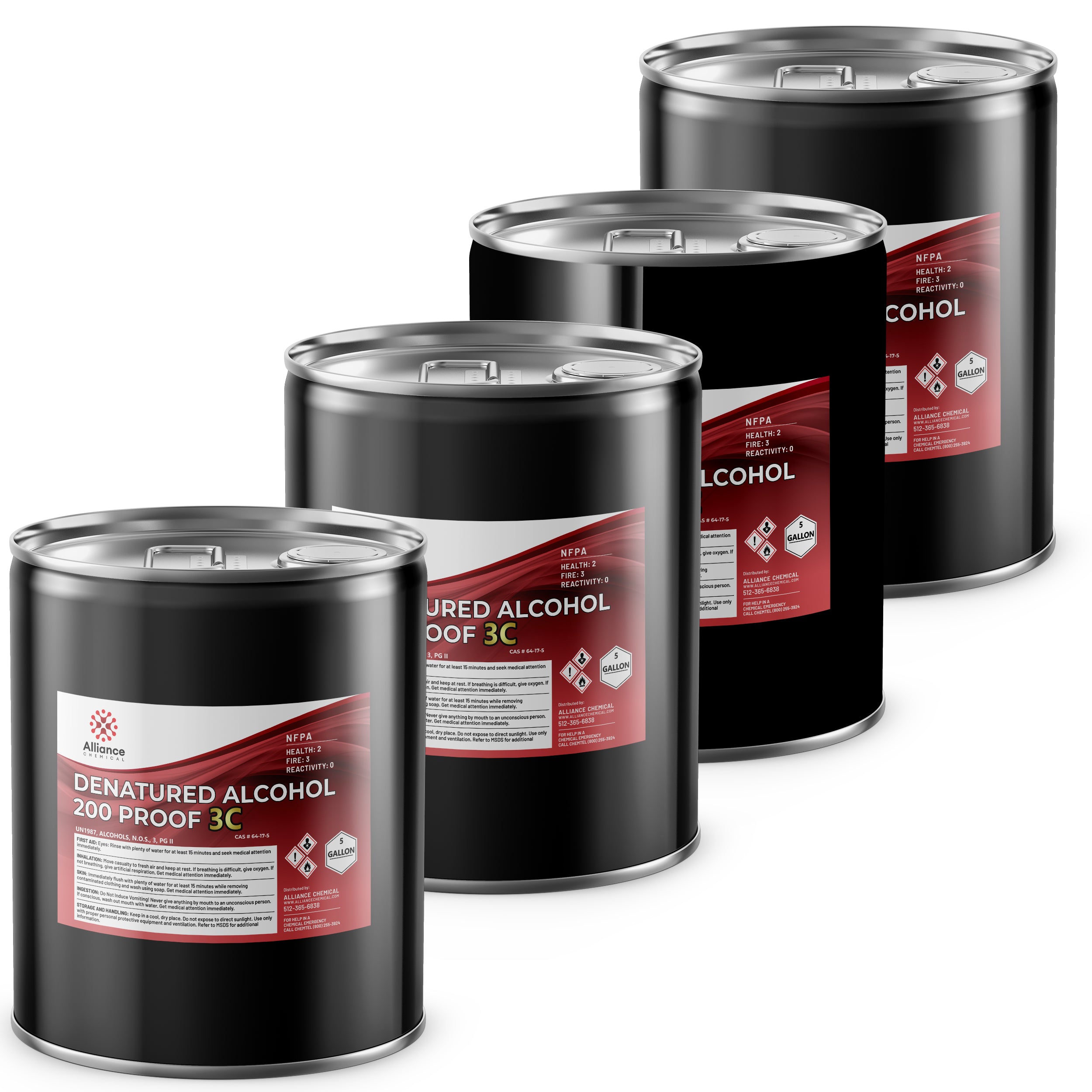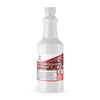Denatured Alcohol 200 Proof 3C
Category : Alcohols
$24.00
$190.00
87%
Off
Unit price
Quantity
Ask a question
Product Overview
Denatured Alcohol 200 Proof 3C is a high-purity ethanol solution that has been rendered unsuitable for human consumption by the addition of denaturants. This Technical Grade product delivers exceptional solvency and a low boiling point, making it a reliable choice for industrial and analytical workflows. With a typical assay of 99.5 wt% ethanol (GC/HPLC via internal standard), it provides consistent performance across solvent-based processes, including extraction, cleaning, and chromatographic applications. The product is designed to meet stringent industry expectations for purity, low residue on evaporation, and minimal heavy metal contamination, ensuring compatibility with sensitive chemical reactions and analytical methods. Its clear, colorless appearance and characteristic alcoholic odor are consistent with high-grade denatured ethanol used in laboratory and manufacturing environments.
In addition to its primary solvent role, this denatured ethanol supports a wide range of technical applications, from solvent extraction of active pharmaceutical ingredients to use as a mobile phase in HPLC systems and as a cleaning/degreasing solvent for industrial equipment. The product's low residue (typical 0.001%) and low aldehyde content help minimize interference in analytical methods and synthetic schemes. Proper handling, storage, and adherence to SDS guidelines are essential to maintain product integrity and safety in facility environments.
Key Properties
- Appearance: Clear, colorless liquid
- Odor: Characteristic alcoholic odor
- CAS: 64-17-5
- Chemical Formula: C₂H₆O
- Molecular Weight: 46.07 g/mol
- Boiling Point: 78.37°C
- Boiling Point (Adjusted): 78.37°C
- Specific Gravity (20°C): 0.784–0.792 (typical 0.789)
- Density (25°C): 0.789 g/mL
- Vapor Pressure (20°C): 59 mmHg
- Viscosity (25°C): 1.2 cP
- Refractive Index (20°C): 1.361
- Residue After Ignition: Max 0.003 wt% (typical 0.001)
- Water Content (Max): 0.5 wt% (typical 0.2)
- pKa: 15.9
- Chloride (Cl⁻) (ppm max): 2 (typical 0.5)
- Nitrate (NO₃⁻) (ppm max): 5 (typical 1)
- Arsenic (As) (ppm max): 0.0005 (typical 0.0002)
- Heavy Metals (as Pb) (ppm max): 0.5 (typical 0.1)
- Iron (Fe) (ppm max): 0.5 (typical 0.1)
- Copper (Cu) (ppm max): 0.5 (typical 0.05)
- Sulfate (SO₄²⁻) (ppm max): 5 (typical 1)
Common Applications
- Solvent for Extraction: Industry use in pharmaceutical manufacturing to extract active pharmaceutical ingredients from plant materials with high solvency and low impurity carryover.
- Cleaning Agent: Industrial degreasing and surface cleaning in manufacturing environments due to rapid evaporation and low residue.
- HPLC Mobile Phase: Utilized as a mobile-phase component in analytical chromatography for high-purity separations and reproducible retention times.
- Laboratory Reagent: Reagent in diverse chemical syntheses and analytical procedures requiring anhydrous or low-impurity ethanol.
- Fuel Additive (where permitted): Used to improve combustion characteristics in energy applications following regulatory guidelines.
- Denaturant Medium: Serves as a standard denatured ethanol for sample preparation and non-consumptive lab workflows.
Safety Precautions
Handling and storage should follow standard laboratory practices for flammable liquids: keep in a cool, well-ventilated area away from sources of ignition, store in HDPE or glass containers, and use proper ventilation during handling to minimize inhalation exposure. Wear appropriate PPE, including chemical-resistant gloves, splash goggles, and suitable lab coats or coveralls. Grounding and bonding may be required for large volumes to prevent static discharge and vapor accumulation.
Additional safety considerations include adherence to SDS guidelines, monitoring for exposure limits, and implementing emergency response procedures for spills, inhalation, or skin/eye contact. In the event of skin or eye contact, rinse with water for several minutes and seek medical attention if irritation persists. For inhalation, move to fresh air and seek medical evaluation if symptoms occur. In case of ingestion, do not induce vomiting and obtain medical assistance immediately.
Benefits
✔ High Purity – Typical assay 99.5 wt% with low residue supports precise analytical and industrial workflows.
✔ Low Impurity Profile – Monitored aldehydes, metals, and anion contaminants minimize interference in sensitive reactions and chromatographic applications.
| Property | Value |
|---|---|
| Molecular Weight | 46.07 g/mol |
| Formula | C2H6O |
| Assay | 100% |
| Flash Point | 13 |
| Form | Liquid |
| Solubility | Soluble in water and most organic solvents |
| Appearance | Clear, colorless liquid |
| Melting Point | -114 °C |
| Boiling Point | 78 °C |
| Specific Gravity | 0.789 |
| Industry | Industrial, Wastewater |
Compare Products
| Price |
|---|
| SKU |
| Rating |
| Discount |
| Vendor |
| Tags |
| Weight |
| Stock |
| Short Description |

